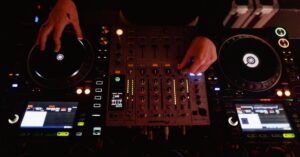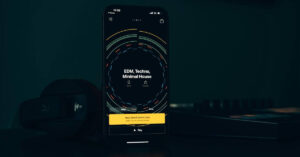Computer
You can’t avoid using a computer as a producer if you don’t want to make your life ridiculously difficult. In today’s environment, I suppose that practically everyone who wants to study the skill of a producer has access to a computer. It serves as the heart of most (home) studios and, in some ways, replaces all important hardware gear such as synthesizers, drum machines, mixing desks, effects, tape recorders, and so on that were required to produce and record music prior to the digital revolution. As a result, the computer you use should be quite powerful in order to do all of these activities smoothly. It is not particularly important which operating system you select—Windows or Mac—and you should make that decision based on what you can handle better. I use a MacBook myself because I prefer it, and I have to support Apple in this case, as what they’ve accomplished with the M1 chip is currently extremely handy for music production.
DAW
The choice of the DAW, together with the computer, is the most crucial decision at the start. The digital audio workstation serves as the digital music studio and contains ALL the tools required to create music. As with the computer, I would recommend going with your gut instinct. Ultimately, you must feel confident and at ease with the program. Common software programs like Ableton, Logic, FL Studio, and Bitwig all essentially provide the same functions and only vary in workflow and design.
Read more: Which DAW to chose for Techno.
Personally, I use Ableton, which is currently incredibly popular for electronic music, which is why there are so many freely available courses and resources on the Internet. This is an important consideration for a beginner because it can greatly minimize the steep learning curve of DAWs. However, many roads lead to Rome, so test out various programs and pick the one that best meets your needs!
Headphones/Monitoring
Obviously, you need to be able to hear what you are doing in order to create music effectively. There are two options for this as a beginner. You may either create music using headphones, or you can buy monitors and set up a mini studio in your living room. There are certain benefits and drawbacks for each, with monitors ultimately being more desired. But for the following reasons, I advise starting with headphones:
The cost is substantially lower for headphones than for effective monitors. You can get quite far with only a pair of standard headphones, especially if they’re calibrated with software like Sonarworks reference, which offers an even more linear frequency response. Furthermore, without audio treatment, you cannot expect good sound in your home studio with monitors. To generate a really authentic sound in the home studio, with which you may compose bass-heavy music such as techno, some technical know-how is required to measure the room, as well as the appropriate isolation of the room to create a flat frequency response. This requires a lot of time and money, which I believe is only worthwhile if you are more established and know you will be doing this for a long period. Another advantage of headphones is that you are not restricted to a particular place. When traveling, you may easily transfer your studio, which consists of a computer and headphones and work without interruption. Additionally, using headphones prevents other people in the surrounding from being bothered. This is crucial since many producers want to work on music 24/7 and may have problems with their neighbors or roommates if they install monitoring equipment at home. As a result, you should determine early on whether you want to work with monitors at home or whether you want to move to headphones or an outside studio.
Synths/ Sound sources
Techno-music is based on synthetic, machine sounds and was created in the 1980s with the assistance of relatively new synthesizers and drum machines. That is why a synthesizer, whether digital or analog, is most likely the core of a techno track. To be honest, you don’t need pricey plugins, synths, or sample packs to begin with. The basic plugins and sounds of the individual DAW are quite adequate for making first steps and producing proper tracks. You should first become acquainted with the tools provided by Ableton, for example, as it is vastly underappreciated by most and truly delivers everything you need. Once you’ve mastered your DAW of choice, there are a plethora of excellent free VSTs to try out before investing in pricey plugins or hardware. A big backbone of Techno are the 909 drums though. It makes sense to invest a little time and effort in finding good 909 drum samples.
Read more: My favourite 909 drums sample packs for techno.
If you are still looking for a sound that you can’t obtain with free plugins, look into hardware synthesizers or renowned VSTs. But, before you go down that rabbit hole, you should be very clear about why you want that specific piece of hardware, since most of the time, it’s not the hardware that matters, but how it’s used and how well the fundamental understanding of synthesis is applied.
Resources & Knowledge
If you have gone over all the details beforehand, you may begin your profession as a producer. From now on, it’s all about consistency, discipline, and knowledge. To compose electronic music, I believe you don’t need a lot of skill, only a lot of information and the correct equipment. Music producers now have a far simpler time getting started than they did a few years ago. There are several free resources available on the Internet that you may use. Masterclasses, in my opinion, are the quickest and most efficient method to quickly learn how to produce your desired sound. You may observe and comprehend the artists’ processes by looking over their fingers.
Read more: 5 quality Masterclasses for hypnotic techno and best free youtube resources for raw Techno production.
But you may also learn a lot about the highly technical world of music production via podcasts, interviews, and tutorials. To learn how to put musical ideas into action, starting with DAW tutorials is especially important.







